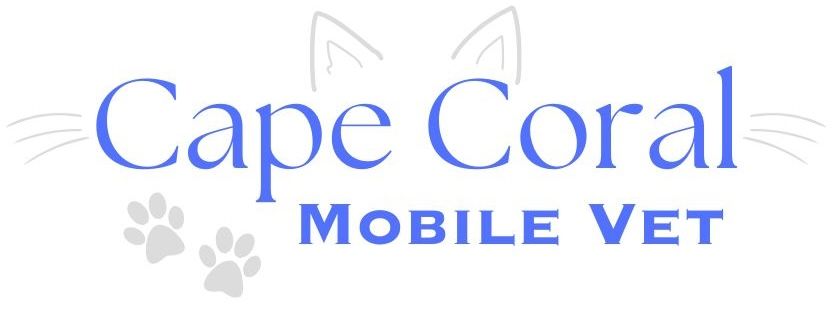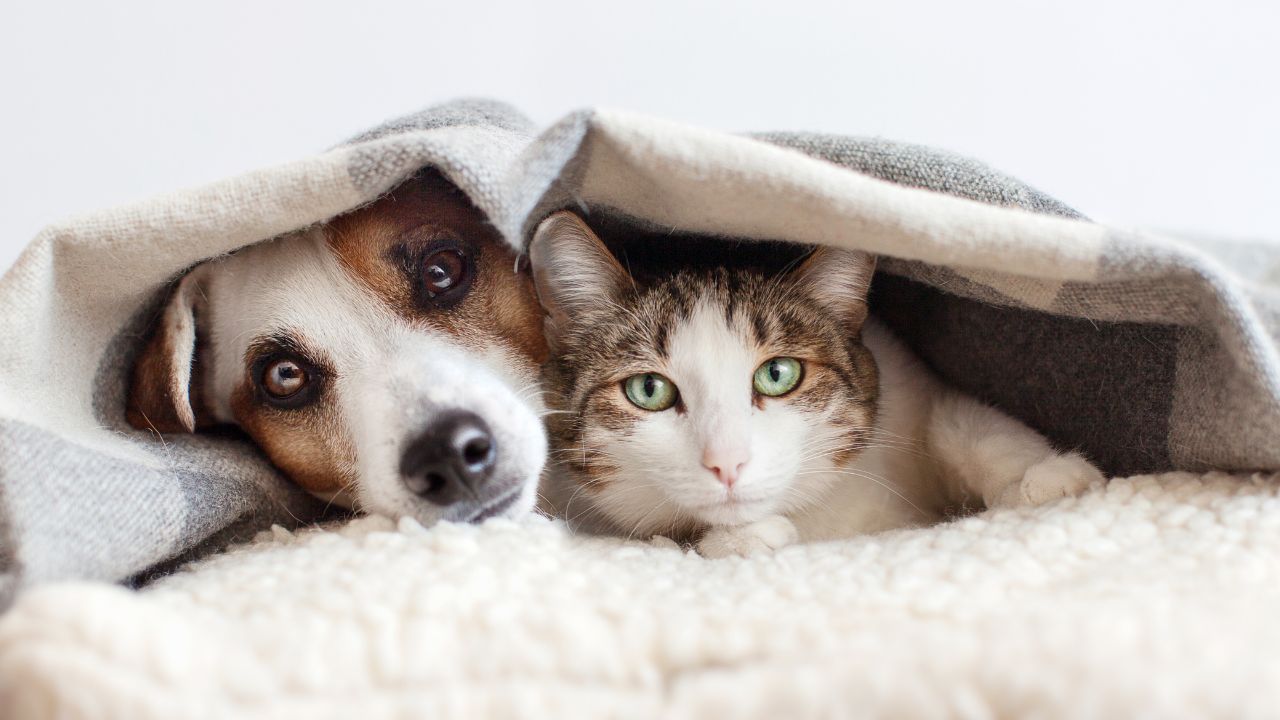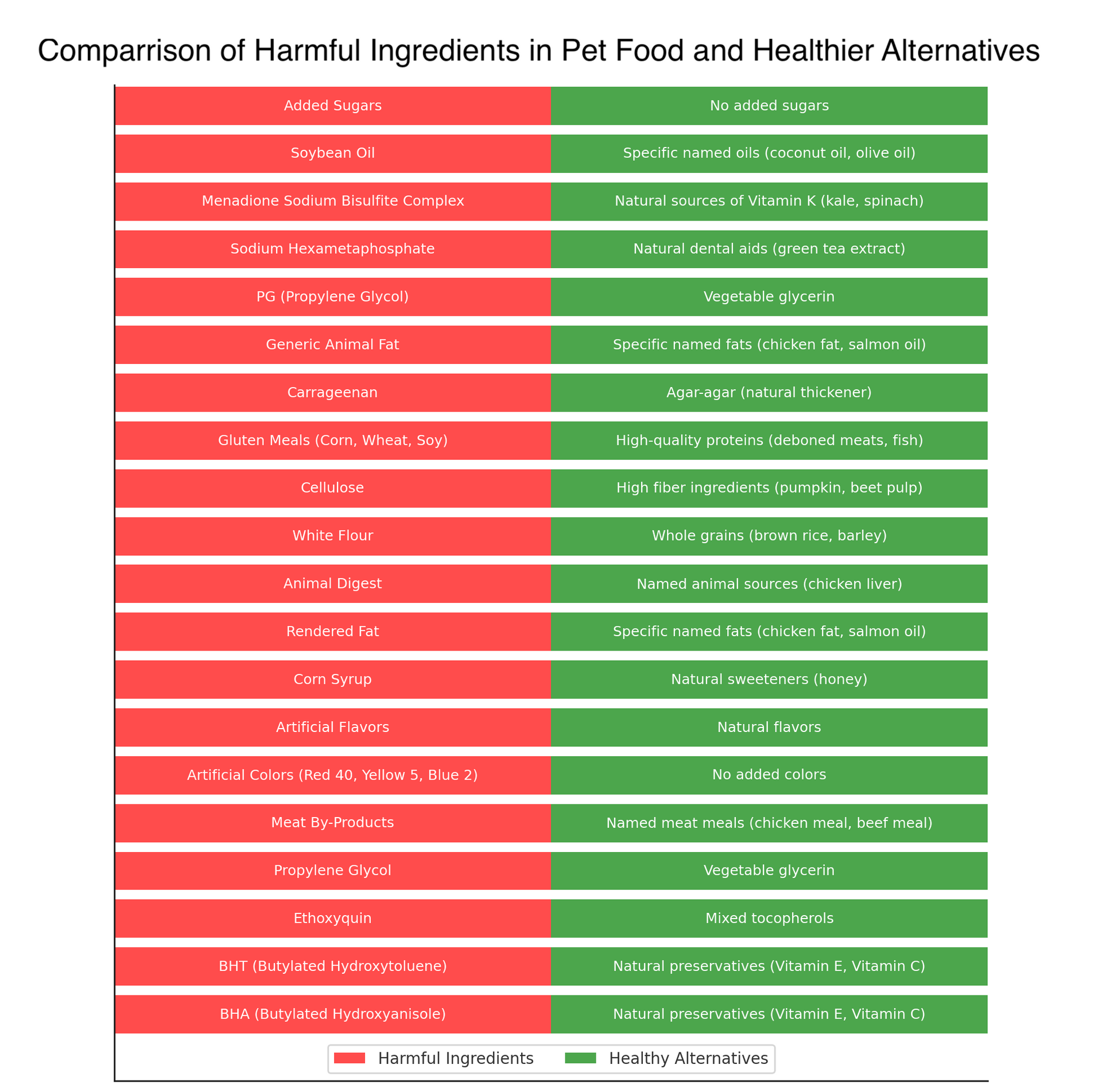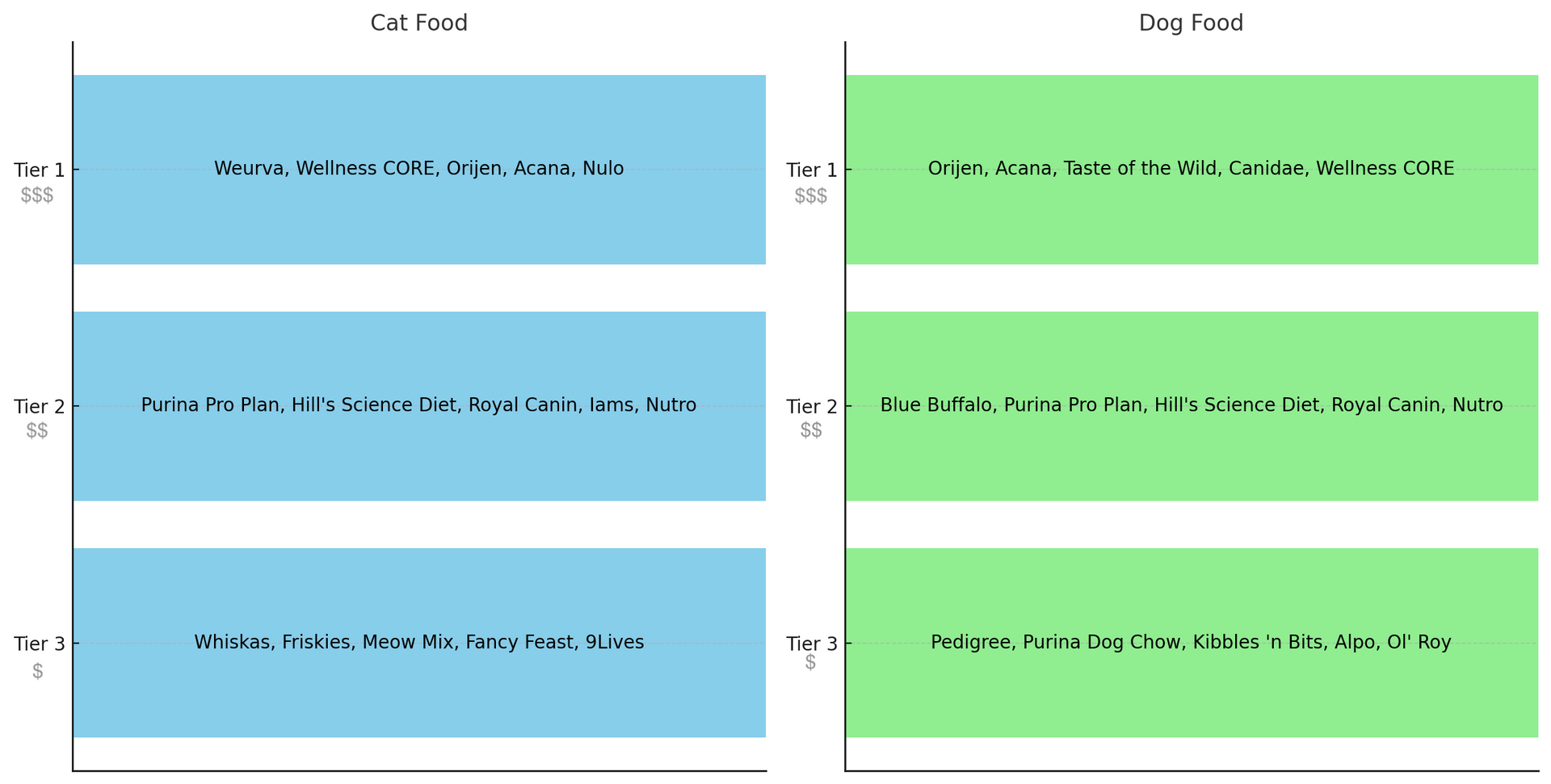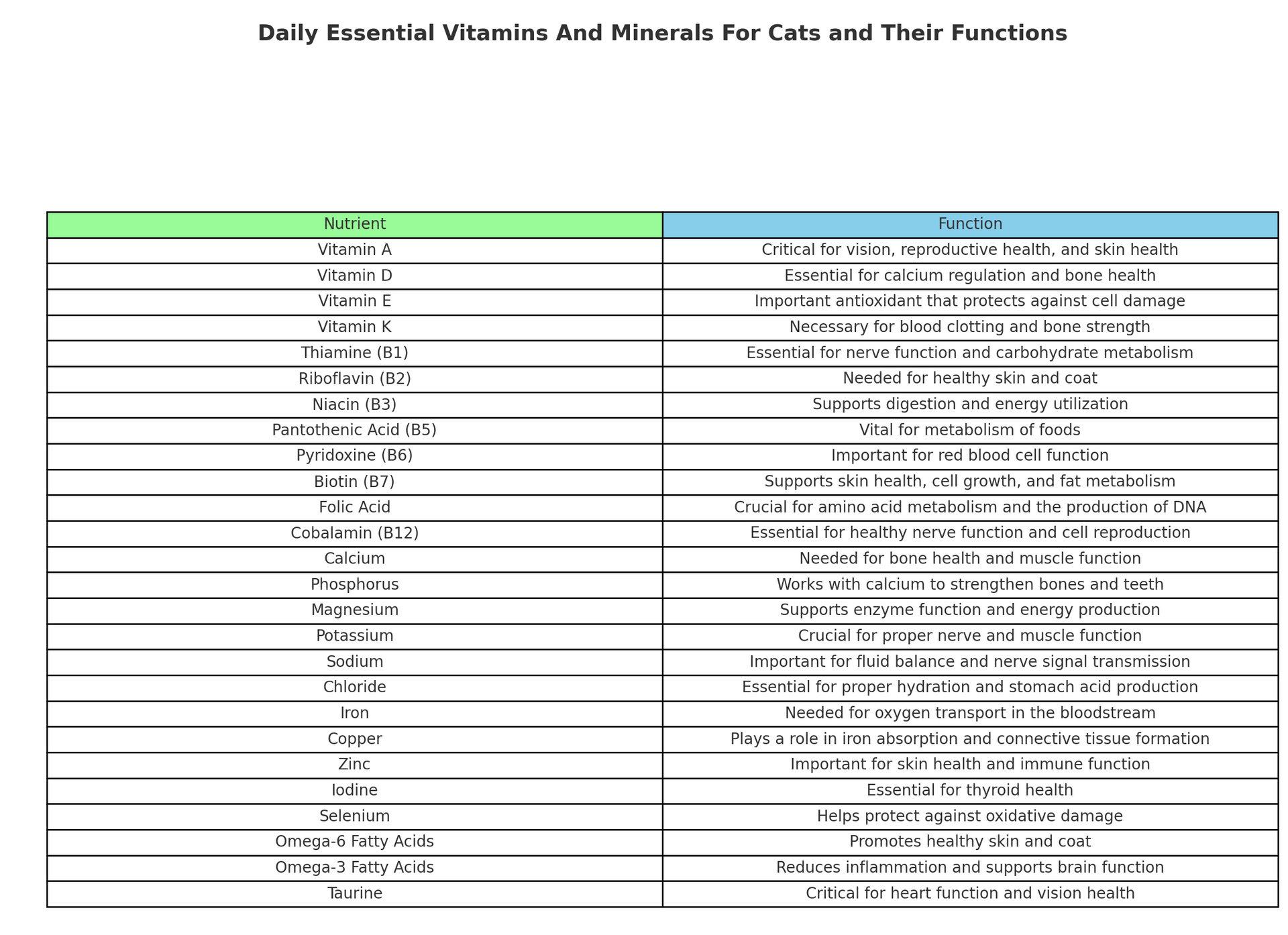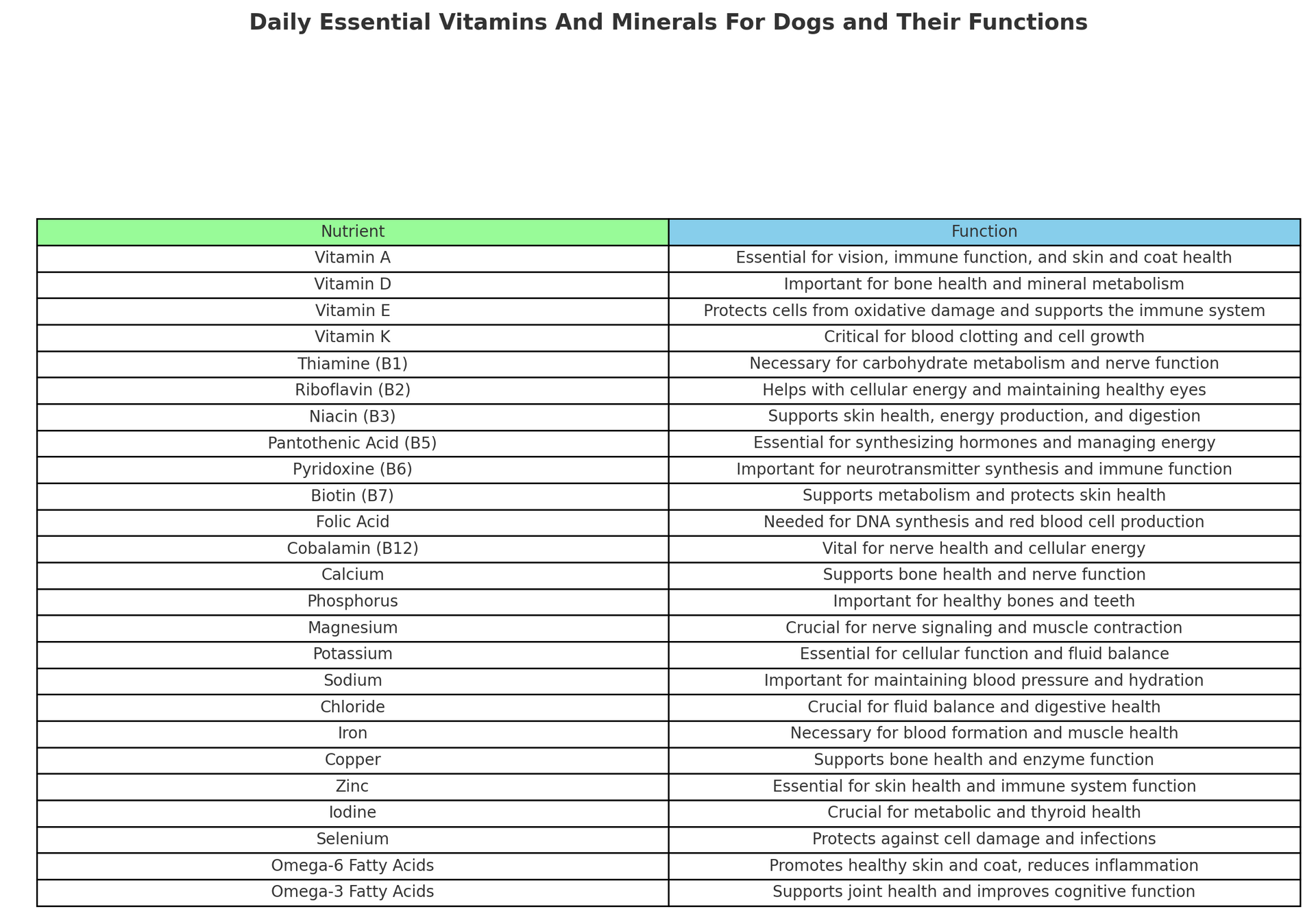CAUTION: Reading this article and becoming aware of the truth about commercial pet food will forever remove you from the blissful ignorance of not knowing any better. Today's science shows us that future (avoidable) health problems and even possibly
shorter lifespans for your pets can be heavily influenced by the food you choose to feed them.
This is not an opinion piece. It is a factual account of how food affects your pet's health over time, just as it does with us two-legged critters. This is also not intended to be a pet food review but rather, a layman's guide to understanding pet food ingredients, what your cats and dogs need, and what they don't. Inside you will find the quick answers you need and a rating scale from downright terrible to sheer excellence that you can use to decipher your options, and make sense of the intentionally complex messaging that big brands use. Our deepest hope is to not only extend the years of life our beloved fur babies get, but also to help them
live healthy lives, free of aches and pain, aliments and diseases simply by using this helpful guide to make better feeding decisions.
Do You Have The Power to Stop Your Pet From Getting Sick?
A favor before you begin; please release any preconceived ideas about cost, availability, or selection of wholesome pet food in your area. Thankfully, in 2025, most cities across America have a wide variety of the good, the bad, and the ugly where pet food is concerned. This is not necessarily about spending more for better quality, but it is quite possibly about orchestrating extra years of life and bountiful health for that fur baby of yours.
As pet parents, we often wonder about our ability to influence our furry companions' health. The food we provide plays a crucial role in their well-being, just as it does for humans. By understanding the impact of nutrition on pet health, we can make informed choices that potentially prevent illness and promote longevity.
Commercial pet food has evolved over time, driven by factors like ingredient availability, shelf-life concerns, and consumer preferences. This transformation has led to questions about the quality and nutritional value of many mass-produced pet foods. While convenience remains a priority for many pet owners, there's growing awareness of the importance of ingredient quality and its effects on animal health.
We'll explore the science behind pet nutrition, decode common ingredients in commercial pet foods, and evaluate popular brands across different quality tiers. By examining the benefits of wholesome diets - both cooked and raw - we aim to equip pet parents with the knowledge to make better-informed decisions about their pets' diets. Now, let's delve into the power of nutrition in preventing illness and promoting optimal health for our beloved cats and dogs.
The Science of Pet Nutrition and Disease Prevention
Factors Influencing Commercial Pet Food Quality
Several factors have impacted the quality of commercial pet foods over time.
- Ingredient availability has played a significant role, with manufacturers sometimes opting for cheaper alternatives to maintain profit margins.
- Shelf life considerations have led to the inclusion of preservatives and fillers, which may not provide optimal nutrition.
- Consumer demand for convenient, affordable options has also influenced formulations.
- Economic pressures and mass production techniques have sometimes resulted in lower-quality ingredients being used.
- Additionally, regulations and labeling requirements have evolved, affecting how pet foods are formulated and marketed.
We must carefully evaluate pet food ingredients to ensure we're providing the best nutrition for our animal companions.
Deciphering Commercial Pet Food Ingredients
Pet food labels can be confusing, but understanding them is crucial for our pets' health. Let's break down
common ingredients and additives to help us make informed choices.
Understanding Common Ingredients
Reading pet food labels is essential for assessing nutritional value, use these guidelines as a starting point:
- Meat or meat meal should be the first ingredient listed.
- Whole grains like brown rice or oats provide fiber and nutrients.
- Vegetables and fruits offer vitamins and antioxidants.
- Be wary of generic terms like "animal by-products" or "meat and bone meal". These may indicate lower quality protein sources.
- Artificial preservatives such as BHA, BHT, and ethoxyquin are controversial additives.
- Corn and wheat are common fillers. While not inherently harmful, they provide less nutritional value than meat-based proteins. Some pets may have sensitivities to these ingredients.
Recognizing Harmful Additives
Many commercial pet foods contain chemical additives that can accumulate in an animal's body over years of consumption. Common harmful ingredients include artificial preservatives, colors, and flavors. We should be wary of ingredients like BHA, BHT, and ethoxyquin, which have been linked to health problems in studies.
Fillers and by-products with little nutritional value are often used to bulk up pet food cheaply. These may include wheat gluten, corn syrup, and meat by-products. Over time, a diet high in these low-quality ingredients can lead to nutritional deficiencies and health issues.
Functional Purposes of Pet Food Additives
Additives serve various roles in pet food. Preservatives extend shelf life and prevent spoilage. Natural options include vitamin E (mixed tocopherols) and vitamin C (ascorbic acid).
Flavoring agents enhance palatability. These can be natural meat extracts or artificial flavors. Salt in pet food helps with taste and provides essential sodium, but excessive amounts can be harmful.
Colorants make food visually appealing to pet owners, not pets. They serve no nutritional purpose. Emulsifiers and stabilizers maintain texture and prevent separation of ingredients.
Vitamins and minerals are added to ensure complete nutrition. Look for specific names rather than generic terms like "vitamin premix".
What Are The Worst Ingredients to Have in Pet Food
When it comes to commercial pet food, it's essential to be aware of certain ingredients that may be harmful or less beneficial for pets. While individual sensitivity can vary among animals, here’s a list of ingredients that are commonly viewed as less desirable or potentially harmful in pet foods:
- Added Sugars - Any form of unnecessary sugars used to enhance taste, contributing to obesity and diabetes.
- Soybean Oil - Often GMO and can cause allergic reactions in some pets.
- Menadione Sodium Bisulfite Complex - A synthetic version of Vitamin K, linked to liver toxicity and other health issues.
- Sodium Hexametaphosphate - Often added for dental properties, but can have gastrointestinal side effects.
- PG (Propylene Glycol) - Used to retain moisture, it is chemically derived and potentially toxic.
- Generic “Animal Fat” - A non-specific ingredient that can be sourced from various animals with inconsistent quality.
- Carrageenan - Although derived from seaweed, it is controversial due to potential inflammatory properties.
- Gluten Meals (Corn, Wheat, Soy) - Common allergens that are often used as a cheap protein source rather than more nutritious alternatives.
- Cellulose - Often derived from wood pulp, used as a filler with no nutritional benefit.
- White Flour - Highly processed and lacking in nutritional value, often used as a filler.
- Animal Digest - A boiled down broth made from unspecified animal parts, which can include diseased tissues.
- Rendered Fat - Can be a source of toxins and contaminants, and it's hard to trace its origins.
- Corn Syrup - A sugar added for taste that can contribute to weight gain and diabetes.
- Artificial Flavors - Chemical compounds used to enhance taste without nutritional benefits.
- Artificial Colors (such as Red 40, Yellow 5, Blue 2) - Added for aesthetic purposes but can cause allergic reactions and offer no nutritional benefit.
- Meat By-Products - Can include less desirable parts of animals that are not specified, leading to variability in nutrient content.
- Propylene Glycol - Used in some pet foods to maintain texture and moisture, it's controversial due to potential toxicity.
- Ethoxyquin - A preservative often used in pet foods, suspected of causing various health problems.
- BHT (Butylated Hydroxytoluene) - Similar to BHA, used as a preservative with possible health concerns.
- BHA (Butylated Hydroxyanisole) - A chemical preservative linked to potential health risks.
- There are many more however, I believe the point is well made already......
If you're anything like me, you may not have found the list above to be overly helpful. In fact, that will probably be true for most of us who are not scientists, nutritionists, or veterinarians because we simply don't know how one affects the other, or the whole. That's why we created the following chart to clearly show which healthier alternatives are possible, not only for our pets but for us as well.
Unscrambling What's Inside Popular Pet Food
We've analyzed various cat and dog food brands, categorizing some into three tiers based on
ingredient quality and nutritional value so that pet parents can make a truly informed decision about what to feed their pets. It's important to note that there are several pet food manufacturers who produce pet food that could rank in all three tiers, making it vitally important for pet parents to read the ingredient list before making the final purchase decision.
Tier 1: Premium Cat and Dog Food Analysis
Premium pet foods usually contain high-quality, whole food ingredients.
- For cats, brands like Ziwi Peak offer air-dried raw food with ethically sourced meats and organs.
- Orijen's cat food includes fresh, regional ingredients with high protein content.
- For dogs, Acana provides grain-free options with fresh meats and limited synthetic supplements.
- Open Farm uses humanely raised meats and organic vegetables in their recipes.
These brands prioritize species-appropriate nutrition, avoiding fillers and artificial additives. They often exceed AAFCO standards and may provide additional health benefits.
Tier 2: Mid-Range Cat and Dog Food Analysis
Mid-range options balance quality and affordability.
- For cats, Blue Buffalo offers recipes with real meat as the first ingredient and includes "LifeSource Bits" for added nutrients.
- Wellness Core provides grain-free options with decent protein content.
- Popular mid-tier dog foods include Taste of the Wild, which uses novel proteins and grain-free formulas.
- Hill's Science Diet offers veterinarian-recommended formulas tailored to specific health needs.
These brands generally use better quality ingredients than budget options but may include some plant-based proteins or by-products.
Tier 3: Budget Cat and Dog Food Analysis
Budget pet foods often contain lower-quality ingredients to reduce costs.
- For cats, Friskies and Meow Mix use meat by-products and corn as primary ingredients.
- These foods may meet basic nutritional requirements but offer limited health benefits.
- Common budget dog foods include Pedigree and Purina Dog Chow.
- These brands frequently use corn, wheat, and soy as main ingredients, with meat by-products providing protein.
While these foods meet minimum nutritional standards, they often contain artificial preservatives and colors. Long-term consumption may contribute to health issues in some pets.
Here is an example of how various pet food brands might fall on a graph that compares popular cat and dog foods in all three tiers.
Impacts of Long-Term Ingestion of Harmful Ingredients
The foods we feed our pets can have profound effects on their health over time. Certain ingredients found in many commercial pet foods have been reported to contribute to chronic health issues when consumed regularly, just as it is for us.
Over time we have slowly become aware of various substances that were once thought to be safe and were common place in our lives, which turned out to be harmful and could cause serious health problems including pre-mature death, cancer, and other serious diseases and ailments. A few examples of these are:
- cigarettes (became a known carcinogen in the 1950s)
- asbestos (became a known carcinogen in the 1960s)
- artificial sweeteners (as early as 1970s being linked to serious health issues and cancer)
- alcohol (classified alcohol consumption as carcinogenic to humans by WHO in 1988)
- Teflon (could be linked to several serious health issues including cancer in early 2000s)
- emulsifiers & preservatives (linked to serious health issues including cancer and auto immune disruption)
- pesticides (ROUNDUP) (linked to cancer and serious endocrine disruption in 2015)
- growth hormones (under international scrutiny since the 1980s)
- saturated fats and seed oils (still debated today and thought that high levels of omega-6 can lead to heart disease, cancer, and autoimmune diseases)
This handful of examples shows us the progression of knowledge as it's filtered through big business who must continually adapt and re-formulate, or knowingly poison it's customers. That is the fine line between good, ethical business and class action lawsuits.
Having learned from these and many other real-life events, the only thing we know for sure
is that we cannot continue to go forward with blind trust that our best interests are at
the top of the list, because they're not.
Profit is.
As such, it falls to each of us to
educate ourselves and make healthy choices for the food we consume,
and the food our pets innocently accept from us.
Recognizing Harmful Additives in Pet Food
Many commercial pet foods contain chemical additives that can accumulate in an animal's body over years of consumption. Common harmful ingredients include artificial preservatives, colors, and flavors. We should be wary of ingredients like BHA, BHT, and ethoxyquin, which have been linked to health problems in studies.
Fillers and by-products with little nutritional value are often used to bulk up pet food cheaply. These may include wheat gluten, corn syrup, and meat by-products. Over time, a diet high in these low-quality ingredients can lead to nutritional deficiencies and health issues.
None of this is intended to imply that pet food manufacturers are knowingly using harmful ingredients, or intentionally using the cheapest ingredients possible in their formulations. In many cases a sweeping change, regardless of the reason, takes time to implement and work through the system. While none should be vilified without strict proof of wrong-doing, the consumer has every right (and should absolutely exercise it) to seek out the best possible products for the best possible price and that is how change will be executed, one individual purchase at a time.
Undeniable Health Benefits of Dietary Adjustments
By eliminating harmful additives and low-quality fillers from our pets' diets, we can significantly improve their quality of life. A wholesome diet rich of high-quality proteins, healthy fats, and nutrient-dense vegetables can support better overall health.
Pets fed nutritious, additive-free diets often experience:
- Improved energy levels
- Healthier skin and coat
- Better digestion
- Stronger immune systems
- Reduced risk of chronic diseases
- Longer life expectancy
In some cases, dietary changes can even help manage or reverse certain health conditions. While not a cure-all, proper nutrition plays a crucial role in maintaining our pets' wellbeing and may help reduce the likelihood of terminal illnesses later in life.
Wholesome Versus Raw Diets for Pets
When considering pet nutrition, the choice between cooked and raw diets is a crucial decision. We'll explore the benefits and potential risks of each approach to help you make informed choices for your furry companions.
Benefits and Drawbacks of Cooked Pet Foods
Cooked pet foods offer several advantages:
- They're typically more convenient and have a longer shelf life than raw options.
- Cooking can also eliminate harmful bacteria, making the food safer to handle and consume.
- Many cooked diets are formulated to meet specific nutritional needs, ensuring a balanced intake of essential nutrients.
Potential drawbacks include:
- Some argue that cooking can reduce the nutritional value of certain ingredients.
- It may also alter the natural enzymes present in raw foods.
Despite these potential drawbacks, cooked diets can still provide excellent nutrition when properly formulated.
Evaluating Raw Pet Food Diets
Raw diets have gained popularity among pet owners seeking a more natural approach to feeding.
- Proponents claim that raw diets can improve coat quality, dental health, and digestion.
- These diets often consist of uncooked meats, bones, and organs, mimicking what animals might eat in the wild.
However, raw diets come with potential risks.
- The main concern is the presence of harmful bacteria that could affect both pets and their human companions.
- There's also a risk of nutritional imbalances if the diet isn't carefully formulated.
Pet owners considering raw diets should consult with a veterinarian to ensure their pet's nutritional needs are met while minimizing potential health risks.
As it is for humans, both cats and dogs have minimum nutritional requirements that must
be met every single day. This is why a raw food diet or homemade pet food without
added supplements are not considered nutritionally whole for your pet.
Frequently Asked Questions About Commercial Pet Food
Pet nutrition plays a crucial role in animal health and longevity. Understanding the ingredients in commercial pet foods and their effects on our furry companions can help us make informed decisions about their diets.
How does diet affect a pet's health and risk of disease?
A pet's diet directly impacts their health, longevity, and disease risk. Nutrient-rich foods support strong immune systems, healthy organs, and vibrant coats. Poor-quality diets lacking essential nutrients can lead to obesity, diabetes, and other chronic conditions.
Proper nutrition also helps prevent inflammation, which is linked to many diseases. By feeding our pets wholesome ingredients, we can potentially reduce their risk of developing serious health issues.
What factors have contributed to the declining quality of commercial pet food?
Several factors have led to a decline in commercial pet food quality. Cost-cutting measures often result in the use of cheaper, lower-quality ingredients. Increased demand for longer shelf life has led to more preservatives and fillers. Consumer preferences for convenient, affordable options have also played a role. Some manufacturers prioritize profit margins over nutritional value, leading to compromises in ingredient quality.
What are the common ingredients in pet food, and what purpose do they serve?
Common pet food ingredients include proteins, carbohydrates, fats, vitamins, and minerals. Proteins provide essential amino acids for muscle development and repair. Carbohydrates offer energy and fiber for digestive health. Fats supply energy and support skin and coat health. Vitamins and minerals are crucial for various bodily functions, including bone strength and immune system support.
How do the ingredients in premium pet food differ from those in lower-quality brands?
Premium pet foods often contain higher-quality protein sources, such as whole meats, rather than meat by-products. They typically include more natural ingredients and fewer artificial preservatives or fillers.
Lower-quality brands may use more grains or plant-based proteins as fillers. These foods often contain artificial colors, flavors, and preservatives to enhance palatability and extend shelf life.
What are the potential health impacts of harmful ingredients found in some pet foods over time?
Harmful ingredients in pet foods can lead to various health issues over time. Artificial preservatives may contribute to allergies or skin problems. Excessive grains or low-quality proteins can cause digestive issues and nutritional deficiencies.
Some artificial colors and flavors have been linked to behavioral changes and
hyperactivity in pets. Long-term consumption of poor-quality ingredients may also increase the risk of chronic diseases like obesity and diabetes.
What are the differences between cooked and raw pet food, and how can they influence a pet's health?
Cooked pet food is typically more convenient and may reduce the risk of bacterial contamination. It can be easier to digest for some pets and allows for precise nutrient formulation. Raw diets aim to mimic a pet's natural eating habits. They often contain higher levels of enzymes and may support dental health. However, raw diets require careful handling to prevent food-borne illness. Both options can be nutritious when properly balanced. The choice between cooked and raw depends on individual pet needs and owner preferences.
Please be sure to run any potential dietary changes for you pet by their veterinarian before you begin the transition, especially for cats. As with everything in life, there is an easy way and a hard way to make this happen and you will greatly improve your chances of a seamless changeover by using the sound advice of your vet.
One final word of caution. Don't be surprised or disheartened if you approach your vet with the intent to switch your pet food over to another brand, and you are met with a lack of enthusiasm from him/her. There are several reasons a vet might not be onside with a dietary change including (but not limited to):
- Lack of knowledge on the subject. The primary job of your vet is not nutrition, it's biological health and in many cases the topic of nutrition was a very small section of the overall training. So unless your vet specifically went out of their way to study pet nutrition, their opinion is about as good as yours!
- No kick-backs. The last time you went to your vet did you notice the new shelf full of cat and dog food from some of the biggest "Tier 2" pet food producers in existence today? While most vets are surely recommending good products to their clients, these endorsement do come with a referral fee that is paid to them from the product supplier. This is a completely acceptable business practice however it can sway the recommendations made considering this new merchandising corner now brings in new found revenue your local vet never had before.
Best wishes, from
Cape Coral Mobile Vet in Florida
